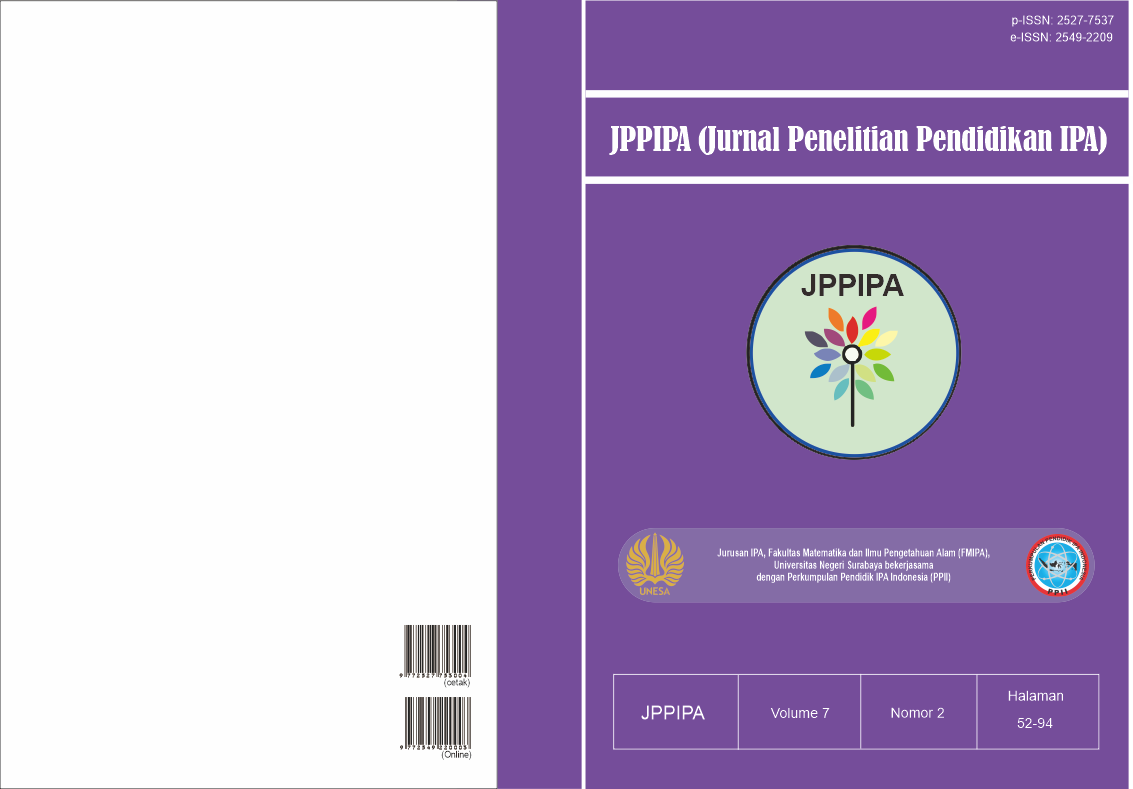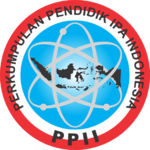DEVELOPMENT OF E-MODULES USING AUGMENTED REALITY IN PHYSICS TEACHING AT HIGH SCHOOL OF MANOKWARI REGENCY
DOI:
https://doi.org/10.26740/jppipa.v7n2.p52-59Keywords:
Physics E-module, augmented realityAbstract
The development of the physics E-Module at this time really needs to be done because of the very rapid development of information technology and coupled with the Covid-19 pandemic situation which requires the availability of the physics E-Module so that it can assist students in learning physics both face-to-face and virtual learning. Based on preliminary observations made in public high schools and private high schools, it was found that the physics module used was a conventional module, namely the printed version of the physics module and the printed year of the module was out of date, so the module is less relevant when used today. The aim of this research is to develop a high school Physics e-module in Manokwari Regency so that it becomes a valid, effective and practical e-module. The method used is the four-D (4D) method. The population of this study were students of class XI IPA 4 at SMA Negeri 1 Manokwari and class XI IPA at SMA YAPIS Manokwari. This research produces an E-Module of Rotational Dynamics and Rigid Body Equilibrium using Augmented Reality (AR) which can be used interactively by students via mobile devices or computers, where in this E-Module there are simple experiments presented in the form of videos, animations using AR, virtual reality that can be accessed anywhere and anytime so that it can improve the physics learning outcomes of class XI IPA students. The purpose of this research is to produce E-Modules using AR in physics lessons that are practical and effective and can improve student learning outcomes.
References
Indika Irkhamni. (2021). Pemanfaatan Canva Sebagai E-Modul Pembelajaran Matematika Terhadap Minat Belajar Peserta Didik. Konferensi Ilmiah Pendidikan Universitas Pekalongan, 2021: 127-133
Koyan, I. wayan. (2011). Asesmen dalam Pendidikan. Singaraja: Undiksha.
Nieveen, N (1999). Prototype to reach product quality. Dlm. van den Akker, J., Branch, R.M., Gustafson, K., Nieveen, N., & Plomp, T. (pnyt). Design approaches and tools in educational and training. Dordrecht: Kluwer Academic Publisher.
Sugiyono. (2014). Metode Penelitian Pendidikan Kuantitatif, Kualitatif, dan R&D. Bandung: Alfabeta.
Tria, A. sutrianing. (2014). Desain Pembelajaran Kimia Bermuatan Nilai Pada Topik Larutan Elektrolit Dan Non Elektrolit. Universitas Pendidikan Indonesia.
Widyaningrum, R., Sarwanto, S., & Karyanto, P. Pengembangan Modul Berorientasi Poe (Predict, Observe, Explain) Berwawasan Lingkungan Padamateri Pencemaran Untuk Meningkatkan Hasil Belajar Siswa. Bioedukasi, 6(1), 2013.
Downloads
Published
How to Cite
Issue
Section
 Abstract views: 541
,
Abstract views: 541
, PDF Downloads: 506
PDF Downloads: 506












